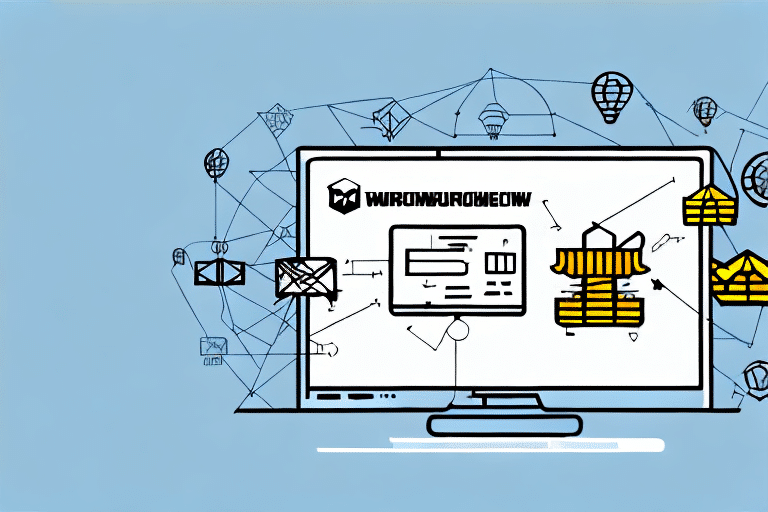Overview of DHL eCommerce and NetSuite WMS Integration
DHL eCommerce is a global logistics solution tailored for e-commerce businesses, offering a variety of shipping options to meet diverse customer needs. NetSuite WMS, an enterprise warehouse management system, provides a comprehensive suite of tools to oversee logistics and warehouse operations. Integrating DHL eCommerce with NetSuite WMS allows businesses to gain a unified view of their inventory and shipping processes, enhancing operational efficiency and customer satisfaction.
One significant advantage of this integration is real-time shipment tracking. Businesses can monitor shipments from pick-up to delivery, facilitating quick issue resolution and providing customers with accurate order information. Additionally, DHL eCommerce offers value-added services such as customs clearance and returns management, further streamlining the shipping process.
Benefits of Integrating DHL eCommerce with NetSuite WMS
Streamlined Logistics Management
Integrating DHL eCommerce with NetSuite WMS enables businesses to manage their entire logistics function from a single platform. This integration provides full visibility over orders, inventory, and delivery schedules, reducing errors and minimizing waste. Enhanced order accuracy and a variety of shipping options, including same-day and international delivery, help broaden customer reach and increase revenue streams.
Real-Time Shipment Tracking
The ability to track shipments in real-time allows businesses to monitor the progress of orders, identify potential delays, and take proactive measures to resolve issues. This transparency not only improves operational efficiency but also enhances customer satisfaction by providing up-to-date information on order status.
Connecting and Optimizing the Integration
Establishing the Connection
Connecting DHL eCommerce with NetSuite WMS is achieved through APIs (application programming interfaces). The process involves setting up a DHL eCommerce account, configuring NetSuite WMS settings, and ensuring proper data synchronization between the two platforms. Once connected, businesses can automate the creation of shipping labels and tracking information, reducing manual errors and saving time.
Optimizing Performance
Optimizing the integration requires regular monitoring and adjustments. Key steps include setting up default shipping options, configuring delivery times and rates for different regions, and creating custom workflows for various order types. Leveraging real-time tracking tools and analytics can further enhance efficiency and provide insights for continuous improvement.
Best Practices and Common Challenges
Best Practices for Management
- Maintain Accurate Inventory Levels: Ensure sufficient stock to fulfill orders without interruptions.
- Employee Training: Equip staff with the necessary tools and knowledge to effectively use the integrated system.
- Regular Data Analysis: Review logistics data to identify trends and make informed decisions.
- Clear Communication Channels: Establish robust communication with DHL and other stakeholders to promptly address issues.
- Implement Automation: Use automation tools to streamline operations and minimize the risk of errors.
Addressing Common Challenges
Integrating DHL eCommerce with NetSuite WMS can present challenges such as managing multiple shipping locations and navigating international shipping regulations. Businesses must proactively address these issues by optimizing their logistics strategies and staying informed about regional requirements to ensure seamless operations.
Enhancing Efficiency and Customer Experience
Automated Shipping Processes
Utilizing automated workflows for generating shipping labels and tracking information enhances accuracy and efficiency. Automated systems ensure that all relevant data is up-to-date, providing better visibility into logistics operations and enabling informed decision-making.
Customized Shipping Solutions
By analyzing customer behavior and preferences, businesses can customize shipping rates and delivery times to better meet customer needs. Personalized shipping options increase customer loyalty and can open up new revenue streams.
Real-Time Visibility
Providing customers with real-time visibility into their shipments builds trust and transparency. NetSuite WMS’s advanced tracking tools offer customers accurate and up-to-date information on their order status, enhancing the overall customer experience.
Case Studies and Future Trends
Successful Integrations
Various businesses have successfully integrated DHL eCommerce with NetSuite WMS. For instance, a major retail company reported a 70% reduction in shipping errors, while an e-commerce giant saw a 30% increase in customer satisfaction ratings post-integration. These successes highlight the potential benefits of this integration.
Future Trends in E-commerce Logistics
The e-commerce logistics landscape is evolving with advancements like drone deliveries and autonomous vehicles. Additionally, the integration of artificial intelligence and analytics will enable businesses to optimize their logistics operations further. To stay competitive, businesses should adopt a proactive, data-driven approach, leveraging integrations like DHL eCommerce and NetSuite WMS to navigate future challenges and opportunities.
Conclusion
Integrating DHL eCommerce with NetSuite WMS offers businesses a multitude of benefits, including enhanced operational efficiency, cost savings, and improved customer satisfaction. By following best practices and staying ahead of industry trends, businesses can fully leverage this powerful combination to achieve long-term success in the competitive e-commerce landscape.






















